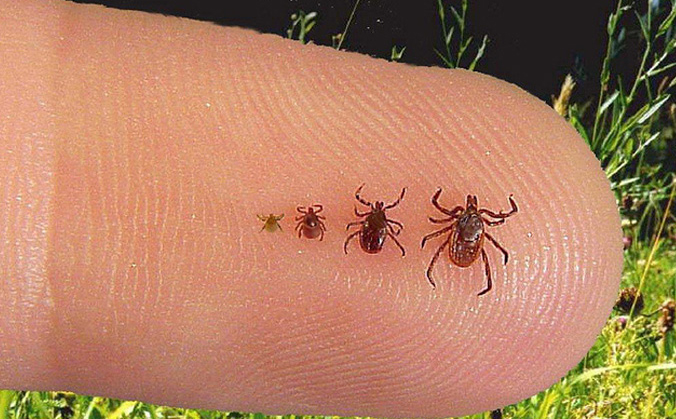Co-Infections of Lyme Disease
Ticks often harbor multiple infectious organisms resulting in co-infections. This video created by Daniel Cameron, MD, MPH a nationally recognized leader for his expertise in the diagnosis and treatment of Lyme disease and other tick-borne illnesses explores the diversity of Lyme disease co-infections. Read About Lyme Disease Co-Infections →
Ticks often harbor multiple infectious organisms resulting in co-infections. Co-infections can be challenging to diagnose as symptoms frequently overlap with many of the other tick-borne diseases including Lyme disease. Physicians have found that co-infections can worsen Lyme disease symptoms as they are severe, persistent and resistant to antibiotic therapy.
Babesia is a parasite with over 100 known species and the severity of the Babesiosis infections vary greatly from patient to patient. Most cases of the Babesia co-infection involve Babesia microti and Babesia duncani. Babesia can be transmitted by tick bites or through contaminated blood transfusions. Symptoms of Babesia can include irregular fevers, chills, sweats, lethargy, headaches, nausea, body aches and fatigue, in some cases patients complain of shortness of breath. Babesia can be effectively treated with a combination of anti-malaria medications and antibiotics such as Atovaquone with Azithromycin.
Ehrlichiosis is a tick-borne bacteria that infects white blood cells. The infection is caused by Ehrlichia chaffeensis and Ehrlichia chagrins. Symptoms may include, fatigue, fevers, headaches and muscle aches. It can be treated with antibiotics such as Doxycycline or Minocycline and Rifampin. If left untreated, Ehrlichiosis can become severe and require hospitalization.
Anaplasmosis is a tick-borne infection caused by the bacterium Anaplasma Phagocytophilum and is similar to Ehrlichia. Symptoms may include, headaches, fever, chills, malaise and muscle aches. Anaplasmosis can be treated with antibiotics such as Doxycycline or Minocycline and Rifampin. This disease can be difficult to distinguish from Ehrlichiosis, Lyme disease and other tick-borne illnesses.
Various Bartonella species have been found in black-legged ticks in northern New Jersey and in western black-legged ticks in California. Research can be confusing because Bartonella can also be contracted through a cat scratch. Some patients had a streak mark rash and early symptoms usually include, fever, fatigue, headaches and swollen glands. Bartonella can be treated with antibiotics such as Doxycycline and Minocycline, Azithromycin, Trimethoprim and Sulfamethoxazole, Clarithromycin and Rifampin.
Southern Tick Associated Rash Illness, or STARI, is an emerging tick-borne illness related to Lyme disease and was identified in the southeastern and south-central United States. STARI is believed to be transmitted by the Lone Star tick; however, it is not officially confirmed as of yet. The hallmark sign of STARI is an EM-like rash similar to that in Lyme disease. Patients may also experience fevers, headaches, stiff neck, joint pain and fatigue. The long term consequences and treatment of the illness have not been established.
Borrelia miyamotoi is a spiral-shaped bacteria that causes tick-borne relapsing fevers. The development of a rash is uncommon with Borrelia miyamoto. Diagnostic testing is limited; however, the treatment thus far is similar to that of Lyme disease.
Remember tick-borne co-infections are the norm, not the exception.

Signs and Symptoms
Lyme disease has been associated with numerous neurologic, rheumatologic and psychiatric manifestations. However, the full range of symptoms needed to recognize the disease may not be apparent to a physician during a routine examination. learn more →

About Ticks
Ticks are tiny parasites that feed on the blood of their hosts (humans and animals) in order to survive and advance to the next life cycle stage. Most ticks have four stages: egg, larva, nymph and adult. The larva and nymph need a blood meal to move to the next stage. Ticks are extremely small, with the nymph the size of a pinhead. learn more →

Misdiagnosing Lyme
Lyme disease and syphilis have both been coined “the great imitator.” Lyme disease symptoms may be similar to other medical conditions, making diagnosing a challenge. The Borrelia burgdorferi (Bb) spirochete is an evasive organism which can penetrate virtually any organ or system in the body.learn more →


